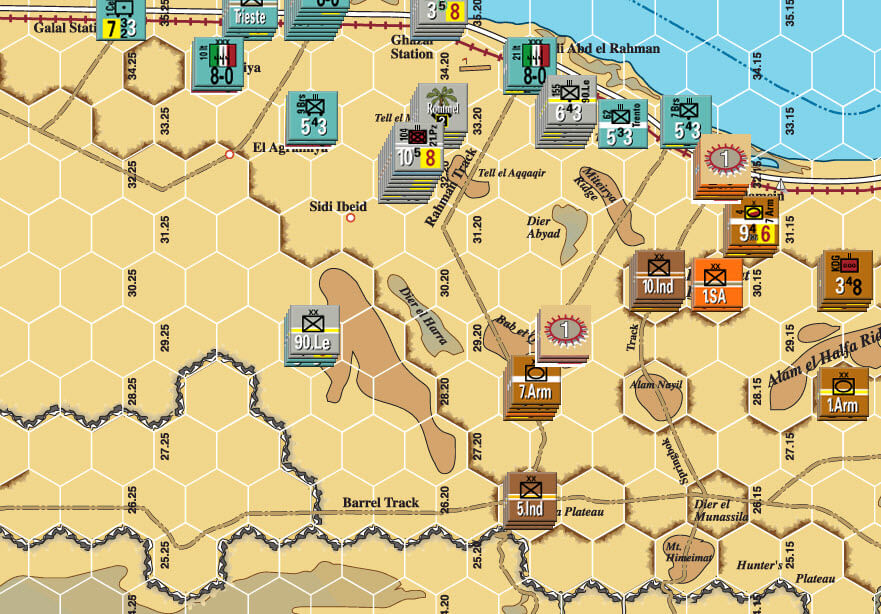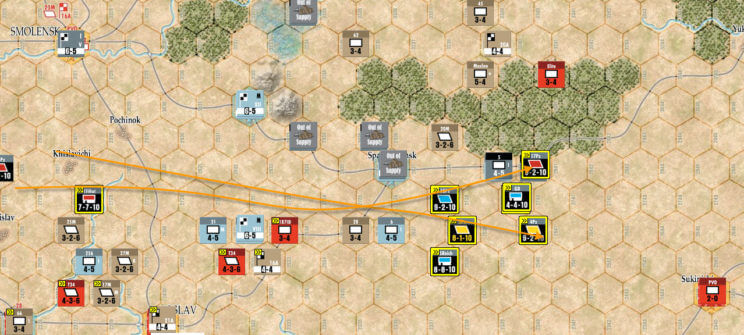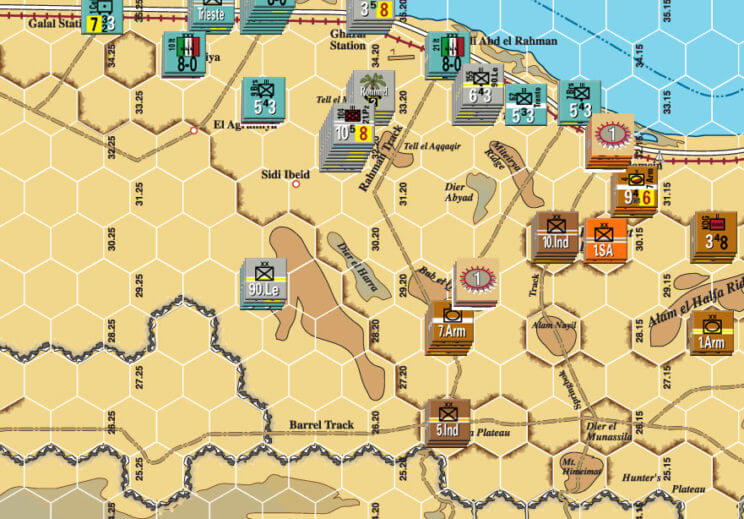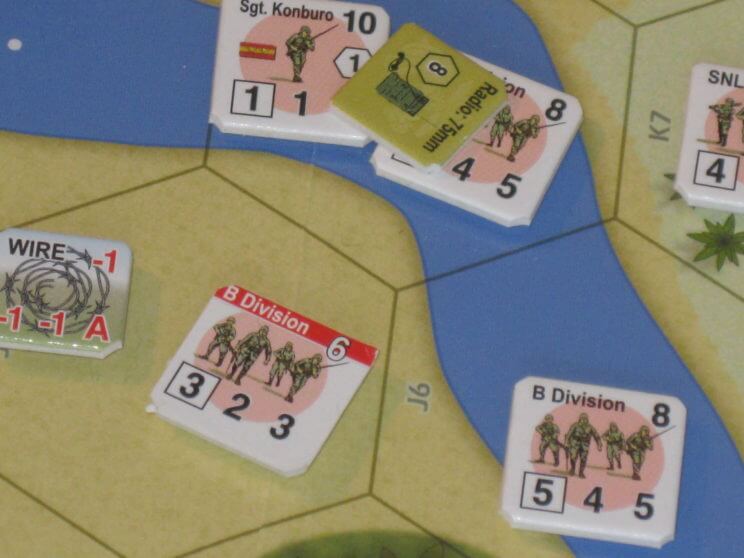Late Friday ramble.
Last nite [May 13th] , I was dicking around with OCS trying to show someone how to play.
It struck me based on their sage comments that they need a few key things in order to get up to speed! – Some core concepts.
To wit: How to move, how to kill and how to stay in supply.
To that I added what is on the counters and what each element means.
At face value this sounds all rather trite. Movement – read a MP rate, check TEC and go for it! But how are enemy ZOCs handled? Are they locking? Do they stop movement? Is there an incremental cost?
Combat was similar at the Uber grand tactical [OCS with its battalions and sometimes companies really could be looked at as the Grand pappy of Grand Tactical for WWII] level. There is more to combat than counting factors and creating a ratio. How is air used, how is arty used, what is an overrun, how does that work, how does air and land work together?
OCS is a great example of a complex system wrought in small consumable logical chunks, presented with enviably clear rules.
Take into account Combat factors, impact of air, effectiveness ratings (ok.action ratings) , and terrain and you got a combat. The details are in Surprise roles, hex-side choices for combatants, and DG status are just that details that can be dealt with in the moment. The other minor adjustment mentally is dealing with a seemingly overwhelming CRT set of results.
As we played I realized one of the other keys to showing a player how a game works was to understand the design intent of the sequence of play. Many games are generic, Check supply, get new guys, move, combat, maybe a reaction phase etc. OCS though does invoke some careful thought as to when to attack, who to attack and what to attack based on where you are in the turn cycle, has the enemy just had his turn? Will you receive a double turn? Does he have reserves, or air, or the supply available to use those elements to impact my choices?
So How to move, shoot, stay in supply and the SEQUENCE these things happen in is of great concern to the war gamer mindset.
Some games give you a sense of mechanistic play [Kangers Dien Bien Phu, ASL] , some provide a bubbling chaos – [Starkweathers A Victory Denied], chit pull, or total chaos [ Jensens Combat Commander] card driven. But each have some fundamentals that we can clue in on and allow us to get going quickly! – Movement, Combat, Sequence of play and Supply are typical subject to scale.
I was very pleased that after an hour of goofing around with counters we resolved a few combat, and then dug into Supply, Trace Supply and the impact of the turn sequence on those elements, in relation to the enemy.
In the next few weeks we will explore Dak2 via Vassal . I’ll try to remember to post some details if I turn the logger on!
You can get the module @ Vassal.org, the rules from The Gamers Archive [google it], and maybe you can join us live at some point.



